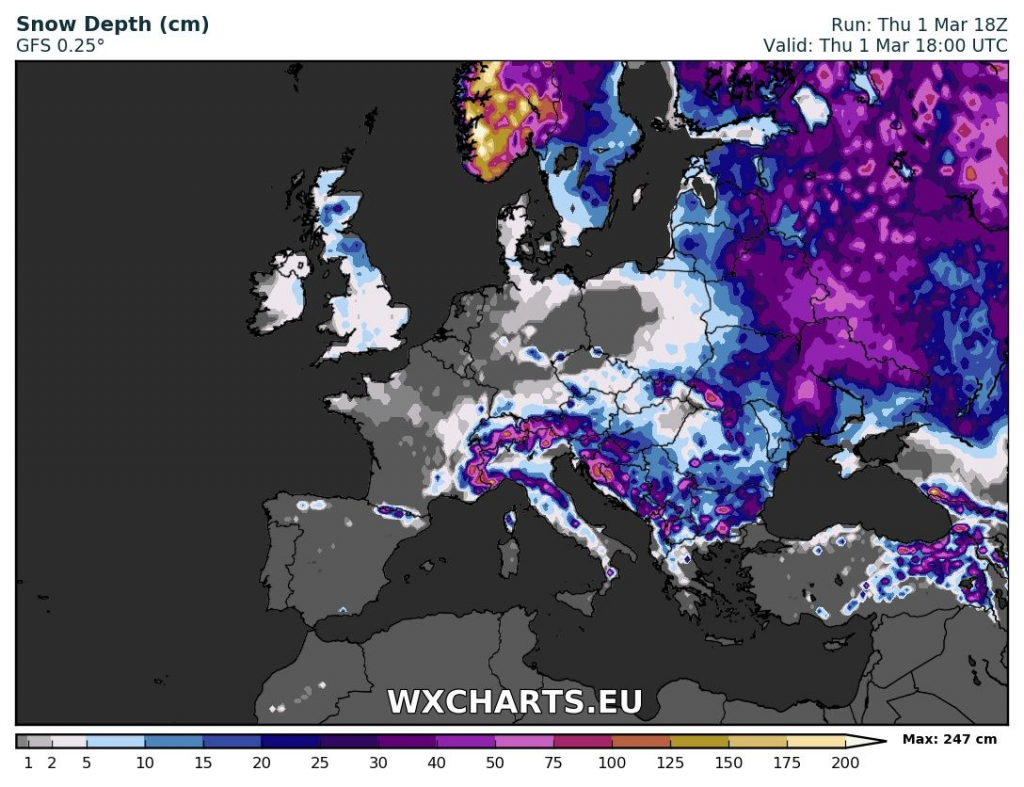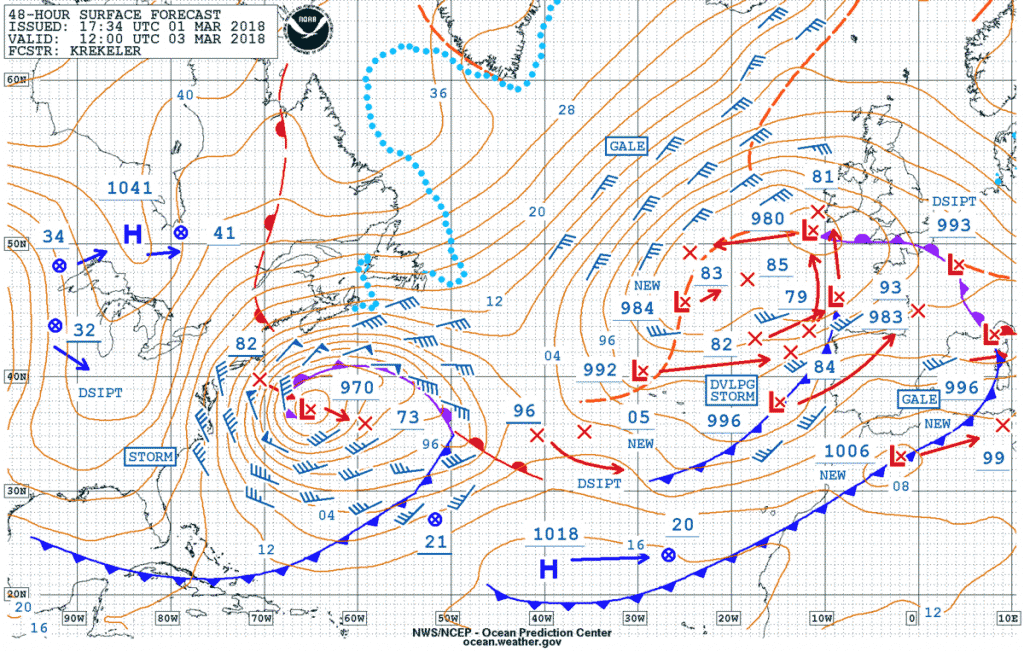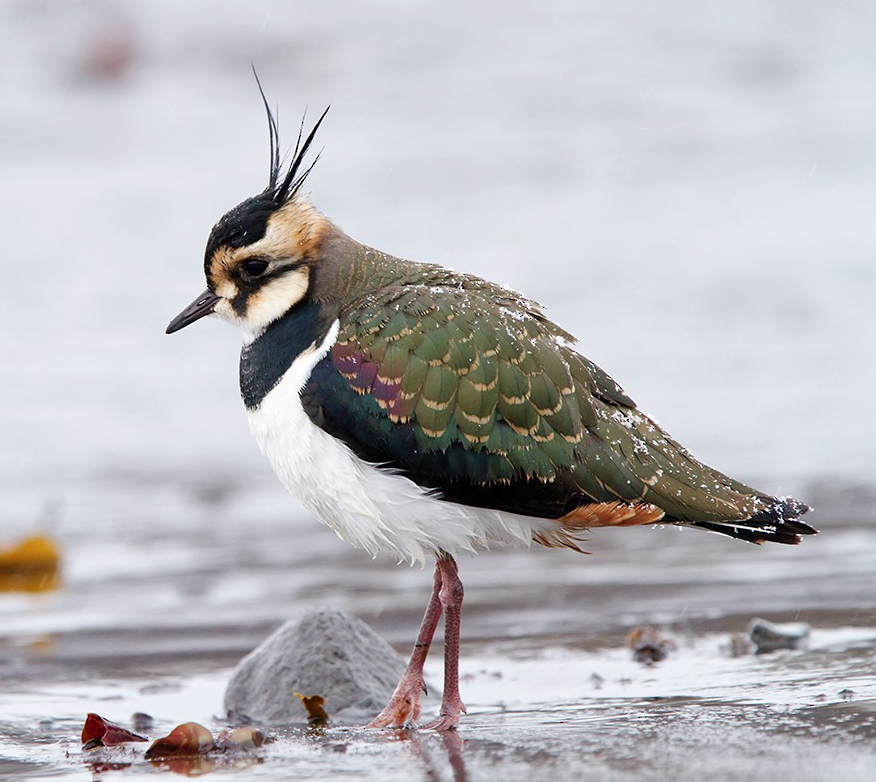To forecast the arrival of Northern Lapwings in eastern North America? Well, we probably need more than a weathervane, including a sprinkle of luck and some much greater understanding of trans-Atlantic vagrancy. But conditions for arrivals of European vagrants in the Canadian maritimes and the northeastern United States have been improving for some days, and they continue to intensify for the coming days. Birders, please get out to your favorite patches and report your observations to eBird. And keep a sharp eye for anything unusual, especially in eastern New York, Massachusetts, Nova Scotia and Newfoundland, for Northern Lapwing in particular . . . briefly, here’s why:
- Conditions in potions of western Europe are rather inhospitable and atypical right now, with cold temperatures and snow cover in many areas (see below) not frequently experiencing snow cover in March.

- For open country birds, like Northern Lapwing, snow cover . . . well . . . it covers the ground.
- Cold temperatures frequently spawn facultative movements of Northern Lapwing in Europe (see Bagg 1967 and Moakler 1969).
- Low pressure over the Atlantic and a negative phase of the North Atlantic Oscillation (see this) contribute to easterly flow (as in from Europe to North America) that can facilitate trans Atlantic movements. The graphic below shows two strong low pressure systems and nearly uninterrupted flow of easterly winds (see the blue wind barbs pointing toward the west) from the United Kingdom to Canada.






